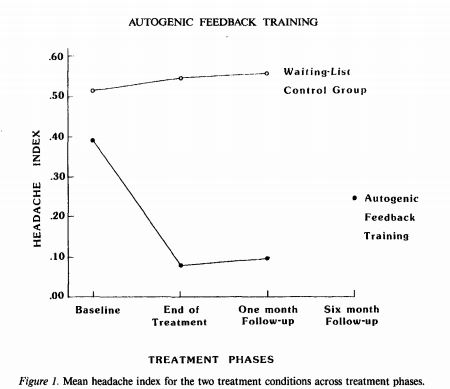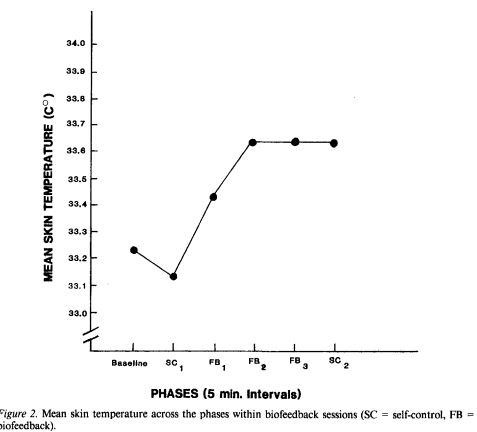Autogenic training and cognitive self-hypnosis for the treatment of recurrent headaches in three different subject groups
Moniek M.ter Kuile, PhilipSpinhoven, A.Corry G.Linssen, Frans G.Zitman, RichardVan Dyck, Harry G.M.Rooijmans
Abstract
The aims of this study were to
1.
(a) investigate the efficacy of autogenic training (AT) and cognitive self-hypnosis training (CSH) for the treatment of chronic headaches in comparison with a waiting-list control (WLC) condition,
2.
(b) investigate the influence of subject recruitment on treatment outcome
3.
(c) explore whether the level of hypnotizability is related to therapy outcome.


Three different subjects groups (group 1, patients (n = 58) who were referred by a neurological outpatient clinic; group 2, members (n = 48) of the community who responded to an advertisement in a newspaper; and group 3, students (n = 40) who responded to an advertisement in a university newspaper) were allocated at random to a therapy or WLC condition.
During treatment, there was a significant reduction in the Headache Index scores of the subjects in contrast with the controls.
At post-treatment and follow-up almost no significant differences were observed between the 2 treatment conditions or the 3 referral sources regarding the Headache Index, psychological distress (SCL-90) scores and medication use.
Follow-up measurements indicated that therapeutic improvement was maintained.
In both treatment conditions, the high-hypnotizable subjects achieved a greater reduction in headache pain at post-treatment and follow-up than did the low-hypnotizable subjects.
It is concluded that a relatively simple and highly structured relaxation technique for the treatment of chronic headache subjects may be preferable to more complex cognitive hypnotherapeutic procedures, irrespective of the source of recruitment.
The level of hypnotic susceptibility seems to be a subject characteristic which is associated with a more favourable outcome in subjects treated with AT or CSH.
https://doi.org/10.1016/0304-3959(94)90127-9